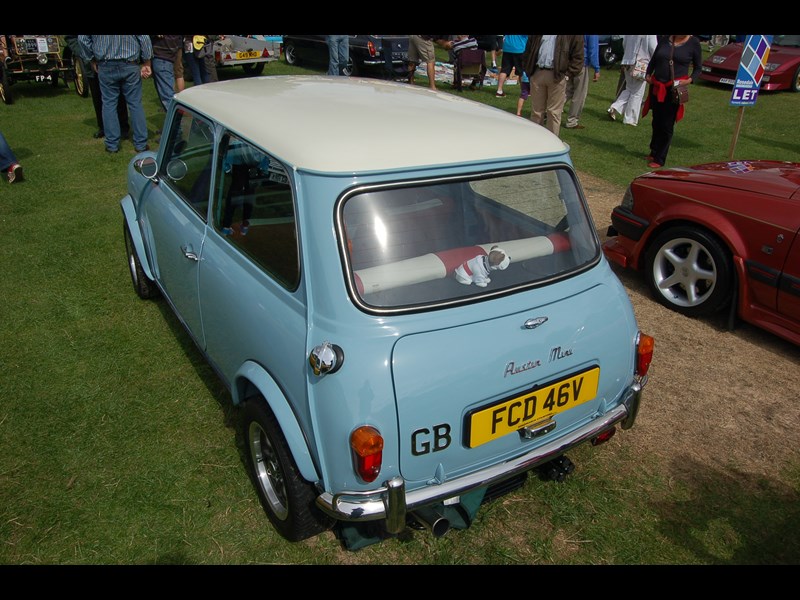WHAT TO LOOK FOR
BODYWORK & CHASSIS
Corrosion is the number one enemy. Sadly these later Minis actually corrode far more readily than those built in previous decades. There are few places for rot to hide, so check all seams and inspect very carefully around the nose and scuttle. The bigger windscreen rubber fitted from 1996 covers unpainted metal, so rot here is very common. Check the seams very carefully around the headlamp panel, where it meets the front wings – corrosion is common here on any Mini. If replacement panels have been fitted, check the panel gaps, especially around the bonnet.
The Sports Pack added a chunky bodykit and 13" wheels. It looks great, but doesn’t do anything for handling or performance. In fact, it detracts a fair bit from both. Mini fans really do like them though, and it’s rare to see a 1996-on Mini without it. Incidentally, Mini owners do like to bling things up, so you can expect extra brightwork or even tuning modifications such as tweaked engines and sports exhausts. There are plenty of Minis out there, so make sure you don’t buy something with ill-conceived modifications that could affect the resale value later. There’s a growing market for cars in entirely standard condition.
Sills are a common corrosion point, as are the inner rear wheelarches either side of the rear seat. If you can, lift the carpet to check the floors. If you can’t, you’ll need to raise the car carefully to check the underside. Most people won’t bother to do this, but it could save big bills if you do. Even a mirror on a stick should give some indication of condition. The front footwells are the key rot spot.
Open the boot and check for corrosion and dampness around the boot floor. Later Minis have the screenwash bottle as well as the battery located here, as space was always tight in the engine bay. Again, it’s an easy area to overlook and corrosion can eat away unchecked and out of sight.
ENGINE
These later Coopers all use the 1275cc A-series engine, but with a vast number of changes. The original relaunched Cooper – known as RSP and introduced in 1990 – in effect uses an MG Metro engine, with a carburettor. 1650 RSPs were produced before a regular production Cooper took over with the same engine. Single-point fuel injection was fitted from October 1991 (spot the ‘1.3i’ badge on the boot). A major overhaul in 1996 saw multi-point injection fitted and a move to a front-mounted radiator. Later engines tend to be more reliable, but the A-series foibles are well known – blue exhaust smoke when thrashed and neglected being the main one. They all tend to drop a little oil.
ELECTRICS
From 1996, there were airbags, side impact beams in the doors and chunkier seats with walnut dashboards. Make sure the SRS light comes on with the ignition, but that it swiftly goes out again. If it doesn’t, there is an airbag fault. Metro-style seats were fitted from 1993. Check for damp if a sunroof is fitted.
RUNNING GEAR
A four-speed gearbox was fitted to all Minis, but a Jack Knight five-speed unit could be fitted optionally. Watch for crunchy gearchanges suggesting a synchromesh or clutch issue, though the change was always notchy. Gearing was taller for later Minis, so they should be very much quieter at speed.









































